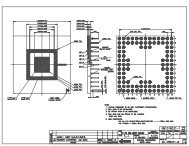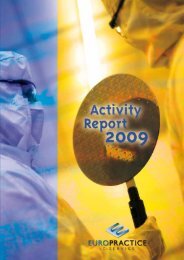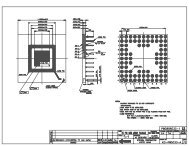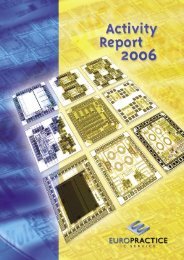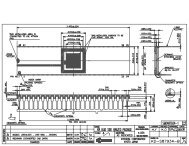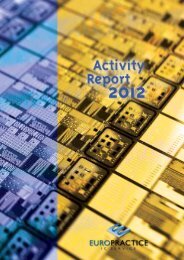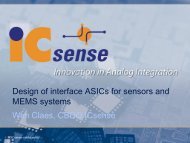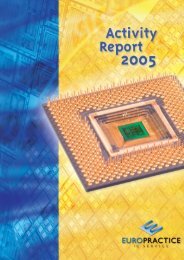Annual report 2008 - Europractice-IC
Annual report 2008 - Europractice-IC
Annual report 2008 - Europractice-IC
Create successful ePaper yourself
Turn your PDF publications into a flip-book with our unique Google optimized e-Paper software.
eter front-end is the result of theco-integration of several buildingblocks. The Mini@sic program madepossible to design and test somecritical core building blocks as thePLO and the frequency divider beforetaping-out the whole system.That all with time scheduling andfabrication costs accessible for Universityresources.AcknowledgementsThe present work has been fundedby the Italian Ministry of Universityand Research (MIUR) under thePRIN 2005 Italian national projectentitled “Silicon Integrated Radiometerfor the Fire Prevention and Civiland Environmental Safeguard”.References[1] A.M. El-Sharkawy., P.P. Sotiriadis, P.A. Bottomley, and E.Atalar, “A new RF radiometer for absolute noninvasive temperaturesensing in biomedical applications,” IEEE InternationalSymposium on Circuits and Systems, pp. 329-332, 27-30 May2007.[2] F.Alimenti, D.Zito, A.Boni, M.Borgarino, A.Fonte, A.Carboni,S.Leone, M.Pifferi, L.Roselli, B.Neri, R.Menozzi, “System-on-Chip Microwave Radiometer for Thermal Remote Sensing andits Application to the Forest Fire Detection”, IEEE InternationalConference on Electronics, Circuits and Systems, <strong>2008</strong>, pp.1265-1268[3] P. Sharma, I.S. Hudiara, M.L. Singh, “Passive remote sensingof a buried object using a 29.9 GHz radiometer,” IEEEAsia-Pacific Microwave Conference, Vol. 1, pp. 2, 2005.[4] K.D.Stephan, J.A.Pearce, L.Wang, “Prospects for industrialremote temperature sensing using microwave radiometry,”IEEE International Microwave Symposium, pp. 651-654, 2004Programmable analog channel forSystem-in-Package biomedical applicationsHamburg University of Technology, Institute of Nanoelectronics,GermanyContacts:Nashwa Abo Elneel, Fabian Wagner, Dietmar Schroeder andWolfgang KrautschneiderE-mail: nashwa.elsayed@tu-harburg.deTechnology:austriamicrosystems 0.35µm CMOS C35B4C3Die size: 2.851 mm x 2.277 mmDescription - applicationSystems are moving to higher levels of complexity, integrating morecomplex functions under more stringent economical constraints. Withadvances in semiconductor technology, the SoC technology has appearedas a viable solution to reduce device cost through higher levelsof integration. However, the push toward more functionality in a singlebox requires the integration of heterogeneous devices that cannot be intrinsicallyachieved in single-technology SoC. In this context, SiP clearlyappears as the only viable solution to integrate more functions in anequal or smaller volume. The development of the SiP technology hasbenefited from the SoC one by reusing existing integrated circuits whichdecreases the design effort. However, it presents many challenges in thedies assembly, the substrate design and the wiring effort.In this context, the institute of Nanoelectronics at the Hamburg Universityof Technology, Germany, is developing new approaches for the transitionprocedure from SoC to SiP. The transition approach is emphasizedwith an application for biomedical applications, where the approach hasbeen applied on a reference SoC to separate it into functional modulesfor the SiP integration.The reference SoC consists of three channels and combines the acquisitionof multiple biomedical signals, such as EEG, ECG and EMG, withon-chip signal processing.[5] G.Macelloni, R.Ruisi, P.Pampaloni, S.Paloscia, “Microwaveradiometry for detecting road ice”, IEEE International Geoscienceand Remote Sensing Symposium, 1999, pp. 891-893F.Ducati, M.Pifferi, M.Borgarino, “Self-oscillation Free 0.35umSi/SiGe BiCMOS X-Band Digital Frequency Divider”, IEEE Microwaveand Wireless Components Letters, vol. 18, no. 7, <strong>2008</strong>,pp. 473-47526europractice | examples



